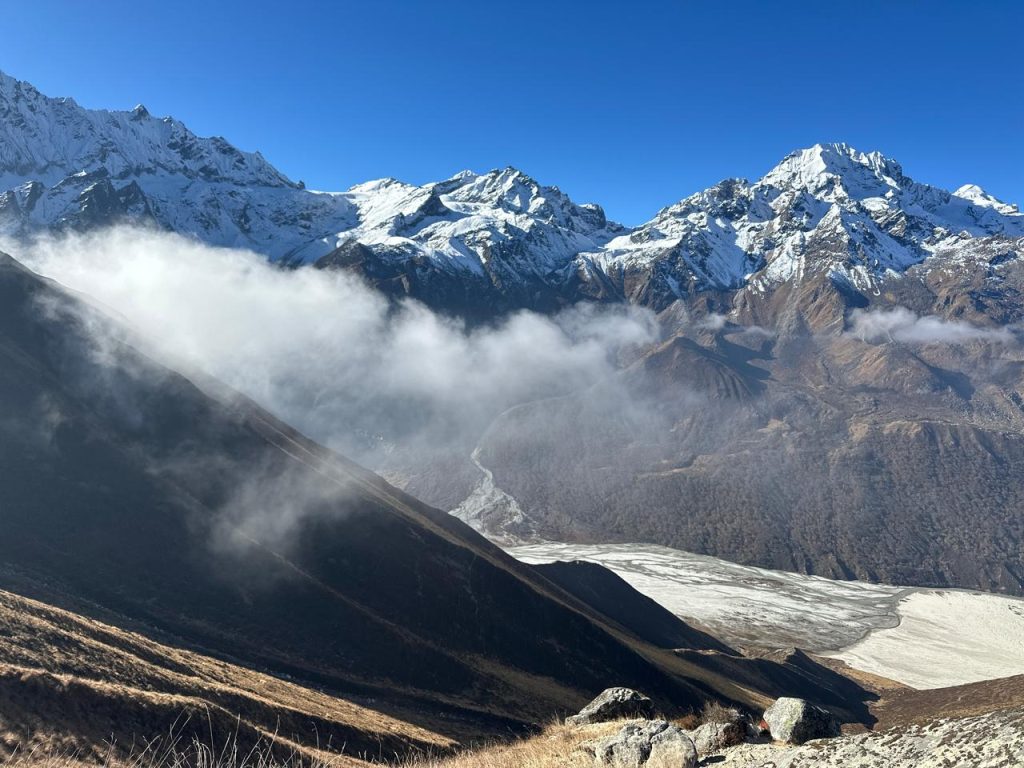
The Langtang region of Nepal is a stunning blend of natural beauty and rich cultural heritage, located just 61.8 km from the capital city, Kathmandu. The Langtang Trek leads adventurers through a mesmerizing valley filled with picturesque lakes and breathtaking landscapes.
Why Choose the Langtang Valley Trek?
As one of Nepal’s most sought-after trekking routes, the Langtang Valley trek offers a more tranquil experience compared to more crowded paths. It’s a manageable trek for beginners and seasoned hikers alike, making it accessible for those with minimal trekking experience. Proper preparation and packing are key to ensuring a successful journey, so we’ve compiled a detailed packing list for your Langtang Valley adventure.
Trekking Overview
Your adventure begins with a scenic drive from Kathmandu to Syabrubeshi, the starting point of the trek. The trail consists of rugged paths, featuring a mix of ascents and descents, culminating at Kyanjin Gompa. This destination provides some of the most stunning views of the Himalayan range in the Langtang district.
Best Seasons for the Langtang Trek

The ideal times to embark on the Langtang Valley trek are during the autumn and spring seasons, when the weather is mild and stable. The winter and monsoon months are less favorable due to increased humidity and unpredictable weather. However, with the right gear and preparation, trekking during off-peak seasons can still be an enjoyable experience.
Essential Packing List for the Langtang Valley Trek
Clothing Essentials:
- Moisture-wicking base layers (long-sleeved shirts and pants)
- Insulating layers (fleece or down jackets)
- Waterproof and windproof outer layers
- Breathable trekking pants
- Comfortable t-shirts and hiking shorts
- Hiking socks (preferably wool or synthetic)
- Warm hat and gloves
- Sun hat or cap and sunglasses
- Bandana or buff for dust and sun protection
- Undergarments and sports bras (for women)
Footwear:
- Waterproof trekking boots (well broken-in)
- Lightweight camp shoes (sandals or slippers)
- Additional hiking socks
Trekking Gear:
- Comfortable backpack (ideally with a hip belt)
- Sleeping bag (appropriate for expected temperatures)
- Trekking poles (for stability)
- Headlamp or flashlight with extra batteries
- UV-protection sunglasses
- Hydration system or water bottles (2-liter capacity)
- Water purification tablets or filters
- First aid kit (including blister treatment and any necessary medications)
- Map, compass, or GPS device
- Lightweight towel
- Multi-tool or knife
- Plastic bags for dirty or wet clothing
Toiletries and Skincare:
- High SPF sunscreen (50+ recommended)
- Lip balm with SPF
- Hydrating moisturizer
- Travel-sized soap and hand sanitizer
- Toothbrush and toothpaste
- Wet wipes or baby wipes
- Toilet paper
- Sanitary products (for female trekkers)
- Optional: talcum powder, deodorant, and nail clippers
Miscellaneous Items:
- Lightweight camera
- Portable or solar charger for devices
- Travel insurance documents and emergency contact information
- Passport and necessary permits (Langtang National Park entry permit)
- Copy of insurance (provide one to your trekking agency)
- Journal or notebook
- Snacks (energy bars, nuts, dried fruits)
- Ziploc bags for organization
- Travel adapter (Type C and Type D plugs)
The Importance of Light Packing
Flexibility and Convenience: A lighter backpack enhances your trekking experience, allowing you to navigate the trails with ease and minimizing physical strain. This enables you to fully immerse yourself in the stunning surroundings.
Reduced Fatigue: Overpacking can transform a thrilling adventure into a grueling task. A heavy load can sap your energy and lead to exhaustion, so it’s essential to adopt a minimalist approach to packing.
Agility on the Trail: A lighter pack improves your adaptability and response to unforeseen challenges, making it easier to navigate difficult terrain and changing conditions.
Increased Efficiency: Trekking with a lighter load allows for quicker and more effective movement, helping you reach your destination with greater ease while enhancing the overall trekking experience.
Frequently Asked Questions about the Langtang Trek
1.What permits are needed for the Langtang Trek?
Two permits are required: the Langtang National Park entry permit and the TIMS (Trekkers Information Management System) card. Both can be obtained in Kathmandu from the Nepal Tourism Board or the Trekking Agencies Association of Nepal (TAAN).
2.Is a guide necessary for the Langtang Trek?
While it’s possible to trek independently, hiring a guide can enhance your experience and ensure compliance with local regulations. If you prefer to trek without a guide, you can start your journey from Syabrubeshi.
3.How should I prepare for the Langtang trek?
Begin your preparation 2-3 months in advance by hiking in your local area and engaging in cardio exercises such as jogging, cycling, and swimming.
4.When is the best time to trek in Langtang?
The optimal seasons are late February to May and mid-September to November. Expect more crowds during April and October.
Conclusion
Effective packing is essential for any trekking journey. Keep in mind factors such as temperature, terrain, and duration when preparing for your trek. The Langtang region promises unforgettable adventures, combining stunning landscapes with vibrant cultural experiences. By prioritizing light packing, you’ll enhance your trekking experience, reducing fatigue and allowing for greater flexibility to enjoy the beauty of Langtang.
Posted on
